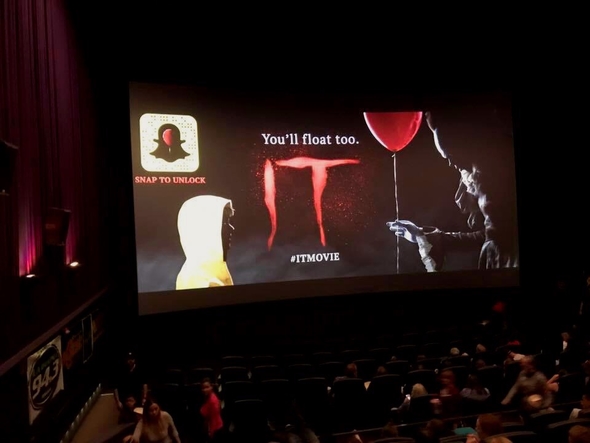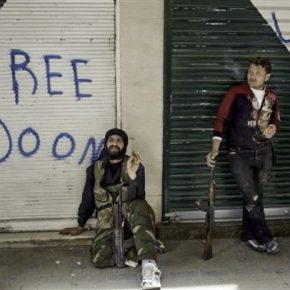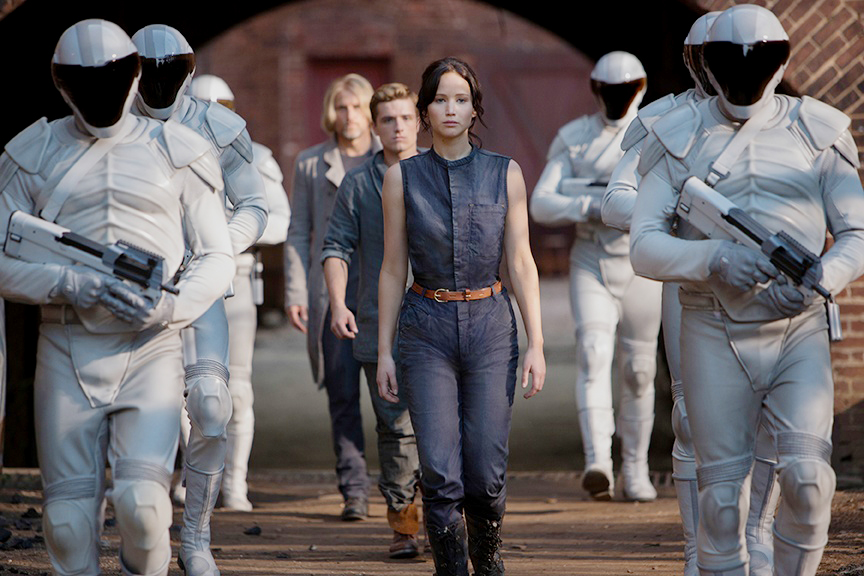I was ecstatic when I got the opportunity to view an advanced screening for the new film adaptation of Stephen King’s It. Although I’m aware of the novel’s faults — for one thing, the ending drags on too long, full of overwrought imagery — I still love the whole thing, even the “bad” bits. My love doesn’t center on the scares King is famous for, but the coming-of-age story that frames the horror. The novel does a fabulous job of showing the bond between children as they grow up together, disillusioned by the horrors they are expected to face alone, but sustained by their belief in the magic of their friendship. King gives us the equivalent of Harry, Ron, Hermione and their friends over a decade before the first Harry Potter novel appeared.
In that sense, the new It is completely perfect. The dialogue of these almost-teenagers is witty, realistic and believable, and their chemistry magical. Even though the film doesn’t have the equivalent of hundreds of pages worth of screen time to explain the origin of their friendship, what we do witness is more than enough. It’s easy to understand why these kids love each other, in a way that both exemplifies the relative freedom of their ages and defies it at the same time. The characters of Richie, Eddie, and Bill are particularly well-adapted. And the rest of the young cast is just as stellar. So where does the film fall short?
Unfortunately, one problem is all too familiar for Hollywood: a failure to give characters who aren’t male or white their proper due. Beverly Marsh, the sole female member of the Losers Club, is not lacking in screen time, but the changes to her character line are demeaning and dated. Beverly was never going to be an easy character to adapt. She’s the center of perhaps the most controversial scene in any King novel, in which she rids herself of the shame for her growing body instilled in her by her abusive father by having sex with each of the boys in the sewers after defeating IT, the monstrous entity that gives the novel its title — which I will capitalize to distinguish from the film, book and pronoun, although King does not do so — and is most commonly represented by Pennywise, the Dancing Clown. Her narrative is centered on her struggles with her burgeoning sexuality and the burden of gender as she tries to find a niche among the boys. The first part is well handled without the controversial sex scene, with her gentle chemistry with both Bill and Ben a highlight. But the movie butchers the second.
In the novel, Beverly is the best shot by far of any of the boys, and is the one designated to shoot IT with silver bullets using a slingshot. She is also the one to injure IT in the House at Neibolt Street, as the movie indicates. But the ways she injures IT, by sticking a stake through its eye, is something any of the boys could have done, which diminishes the importance of her having a special skill normally not associated with girls. It is because she is a crack shot that Beverly is finally able to transcend being the token girl, giving her a unique edge beyond being an object of adolescent desire. She shoots IT not just out of heroism, or a desire to impress Bill, but because she is the only one who has the ability to do so.
Far more problematic than this change is the fact that Beverly is given the “damsel in distress” role played by Bill’s wife Audra within the novel’s adult timeline, which will feature in this adaptation’s second installment next year. Beverly is taken by IT into the sewers, and after seeing the “deadlights” of the’s entity true form, she is rendered catatonic. After that, she serves as a floating zombie who motivates the boys to get their shit together and rescue her.
Although King’s original portrayal empowers Beverly, it also blatantly sexualizes her. Nevertheless, book Beverly, when she confronts her father after he has been possessed by IT, is not taken prisoner. Beverly gets away. She fights back and runs, and when she realizes no one in Derry will help her — the real evil in the novel is often implied to be adult complacency — she rallies her friends to come down to the Barrens to kill IT once and for all. She still acts as a catalyst, but a conscious one.
Why then, does this adaptation, which transposes the tale of the Losers Club from the original 1950s to the significantly more progressive 1980s, a few years after the novel’s adult timeline, feel the need to reduce Beverly to a damsel? Why not save that for Bill’s wife Audra in the second installment? Perhaps it was a matter of saving time. Nevertheless, I, for one, would have gladly sacrificed a few minutes of the lackluster final battle sequence to keep film Beverly as consciously badass as her book self.
There’s also the problem of the kiss that wakes Beverly up. The fairytale trope of the sleeping damsel being kissed awake without her consent by a well-meaning prince is so tired. Why exactly is it in this film, which has already proven it can treat childhood romance tenderly and responsibly? Honestly, a simple confession that Ben wrote Beverly the romantic poem that had gotten her into such trouble would have sufficed. This dated fairytale device shouldn’t have a place in a horror film.
Another problem is Mike Hanlon, the only black member of the Losers Club, whose importance is greatly reduced. In the book, Mike plays a central role in defeating IT, in some ways even more than Bill. He’s the researcher, the archivist, the one who — following in his father’s footsteps — has been digging into Derry’s dark history and drawing his own connections before he even meets the rest of the Losers. He’s ready to supply a lot of the information necessary for discovering what IT really is. So why was this role given to Ben in the film, pushing Mike to the sidelines until a final, rather anti-climatic fight with the bully Henry Bowers?
Having Mike ultimately defeat Henry is a step in the right direction — and a nod towards a similar confrontation in the book — but it’s too little too late. Mike spends most of his screen time without much to do. He just kind of exists, making it easy for the audience to assume that he’s merely a token character included to increase the story’s diversity quotient. I simply can’t think of a good explanation for why they gave the key role of the archivist to Ben, who would have been firmly established himself as a significant character without it thanks to his crush on Beverly and the kiss with which he resuscitates her. Indeed, the movie itself seems to set up Mike to play a bigger role than he actually has. He’s the first Loser we see after Bill, and the first to have a vision of IT. Why didn’t the filmmakers follow through on his characterization?
There’s also the question of how they treat the fire at the Black Spot, one of the major tragedies in Derry’s history. Seen in Mike’s vision and briefly mentioned, this incident is then overlooked in favor of describing how Mike’s parents died in a similar fire. I can only imagine how confusing this is to members of the audience without knowledge of the book. Was the fire at Black Spot the same one that killed Mike’s parents? Were Mike’s parents being targeted in particular? Were they two separate events? This confusion could easily have been avoided, considering that Mike’s parents don’t actually die at all in the books and he has a loving relationship with both of them. Isn’t putting more effort into explaining one racially motivated hate crime in detail better than briefly and confusingly touching on two? The fatal Easter egg hunt was certainly given sufficient explanation and detail. And King himself provided plenty of material about the Black Spot fire to work with. Considering the resurgence in white supremacist hate groups in the United States right now, particularly since Donald Trump became President, you would think that supposedly liberal Hollywood artists would have welcomed the opportunity to connect IT to racism.
The other problem I have with this film is that it isn’t that scary. That’s not to say it’s a bad film. Parts are very impressive. But the film doesn’t end up in the genre that suits it best. Though the famous storm-drain sequence that begins the book is very well done, a lot of the horror sequences fall into tired, predictable traps. The jump scares are all set up very obviously, not in a way that increases the audience’s fear, but more like a polite warning. Don’t get me wrong: there are glimmers of something greater. Stan’s face being devoured by a Modigliani-esque woman emerging from a modernist painting was surreal and genuinely creepy. A sequence of Pennywise dancing against an apocalyptic orange backdrop in a makeshift theatre was haunting. And a shot of Pennywise’s face included in an etching from hundreds of years ago gave me goosebumps.
Bafflingly, what I consider the most terrifying scene in the book was left out. Patrick Hockstetter, another one of the bullies who make the Losers miserable, is violently blood-letted by the leaches found in a refrigerator he had previously used to kill innocent neighborhood pets. Before I saw the film, I had thought that this scene would be the perfect justification for the film’s R rating, since it exemplifies the sort of body horror King is known for and which has been left out of most adaptations of his work. Yet, in spite of the director claiming that the R rating would allow him to stay true to the book’s numerous gut-wrenching sequences, the film seems oddly restrained in its depiction of death. Not all films are designed to be gore fests, of course, but the book’s horror is largely rooted in disgust, camp, and shock value, and it seems odd that the filmmakers didn’t embrace that.
Bill Skårsgard is a decent Pennywise, but Tim Curry was spectacular in the otherwise lackluster television adaptation from 1990. Skårskgard’s performance seems so fixated on not imitating Curry that he never really finds his own niche as the Scary Clown. This Pennywise is definitely not to Curry’s Pennywise as Heath Ledger’s Joker was to Jack Nicholson’s. Perhaps imitation of Curry’s performance, with an update in the blood and guts, as well as better CGI, would have served the film better.
If you were to cut out every instance of horror and just have these remarkable child actors play off each other in a coming-of-age summer movie, it would be a memorable experience. I would happily watch over two hours of Richie snarking, Eddie panicking, Stan irrationally fearing Modernist paintings that don’t come to life — honestly, his run-in with Modigliani is a highlight — Mike failing to shoot sheep, and Bill, Ben, and Beverly exchanging coy, longing looks. As a horror movie, though, this It falls short. Although there might not be a direct correlation between the film’s distressing treatment of the two Losers who are not white and male and its failure to deliver effective horror, both reflect a problematic timidity. Hollywood could and should do better.
Featured image courtesy of Kim Nicolini





